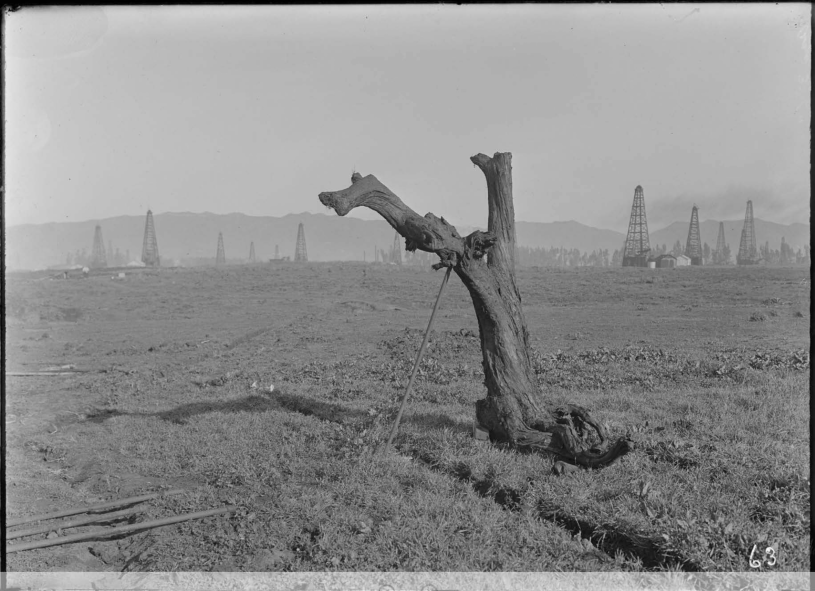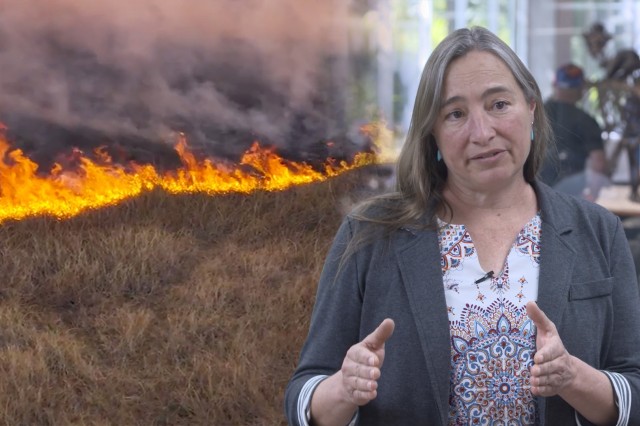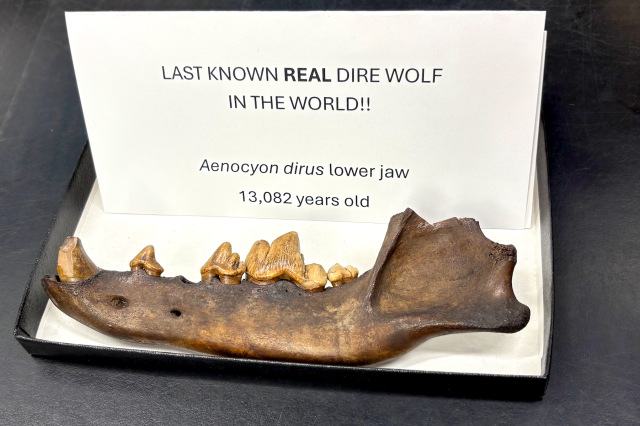Fossil Trees Help Grow Our Understanding of Ancient Climate
A new study reveals how ancient trees from La Brea Tar Pits helped warm the planet during the last ice age by coughing up CO2
Key Takeaways
- Ancient trees, like the fossil juniper from La Brea Tar Pits known as the Pit 3 Tree, helped regulate Earth's climate through a process called photorespiration—essentially coughing up CO2 to keep things from getting too cold during the last ice age
- The study points to the complexity and unknown impact that plants have on climate, along with the importance of fossil plants from La Brea Tar Pits in finding answers
Published November 5, 2025
If a tree falls in the Tar Pits, does it make a sound?
It probably makes a sort of squelching noise. What is certain is that fossil trees from La Brea Tar Pits, like the juniper known as the Pit 3 Tree pictured below, have a lot to say about trees' role in managing atmospheric CO2 in the ancient past and how plants respond to a rapidly changing climate.
A new study in Nature Geoscience reveals that trees helped regulate Earth’s climate through photorespiration—essentially coughing up extra CO2 as temperatures and atmospheric carbon dioxide levels plummeted during the last ice age, keeping surface environments warm enough to support plant life.

“Wood is a good proxy for photorespiration,” says lead author Dr. Max Lloyd, Assistant Professor at Penn State. Photorespiration is kind of the opposite of photosynthesis, where trees suck CO2 out of the atmosphere to grow. When they’re stressed, trees actually put CO2 back into the atmosphere, and that’s photorespiration.
By analyzing isotopes of preserved molecules in the fossil trees from La Brea Tar Pits and across North America and then comparing them to living trees in the present, Lloyd and his co-authors found that as CO2 levels fell along with temperature, trees photorespired more, leaving more CO2 behind in the atmosphere.
“We found a clear link between changes in climate and responses in the biosphere. As atmospheric CO2 levels and temperatures dropped, many plants became less efficient at fixing carbon, which in turn slowed further drawdown of CO2 from the atmosphere. There is a natural feedback loop we’re just starting to understand,” says Lloyd.
The Last Glacial Maximum, when glaciers covered much of North America and Europe, comes at the tail end of the Pleistocene, the epoch that stretched from 2.6 million years ago until 11,700 years ago. It was a time period that saw huge swings in climate and temperature, making it a vital timeframe to help guide us through our modern climate crisis. As the planet experiences a rapidly changing climate, understanding how plant life reacted back then can help predict how it might react in the future.
“When we're thinking ahead about what's going to happen as the climate changes, one big question is: if we continue to increase atmospheric CO2, how will the plant world respond?” says Lloyd.
“The relatively understudied plant fossils at La Brea Tar Pits are an excellent resource for understanding the responses of plants to climate change, not just in the past, but in the future,” said Regan Dunn, assistant deputy director of the La Brea Tar Pits & Museum and co-author on the paper. “Junipers like the Pit 3 tree persisted through some of the lowest atmospheric carbon dioxide levels ever seen, and still thrive in today’s comparatively CO2-rich environment (2x that of the Last Glacial Maximum), but not in the same places as they previously grew. Work like this helps us understand and predict where junipers, and all the species of animals they support, may be able to survive in the future. We’re only scratching the surface on what these ancient plants can tell us.”

